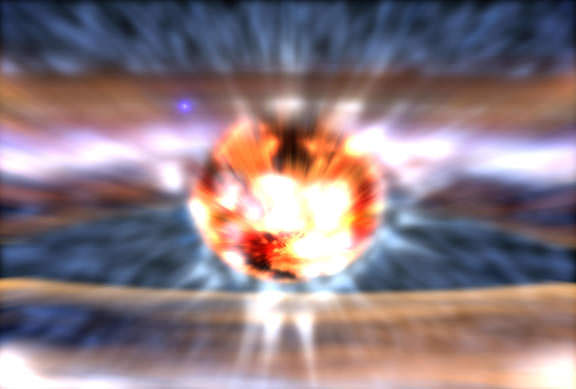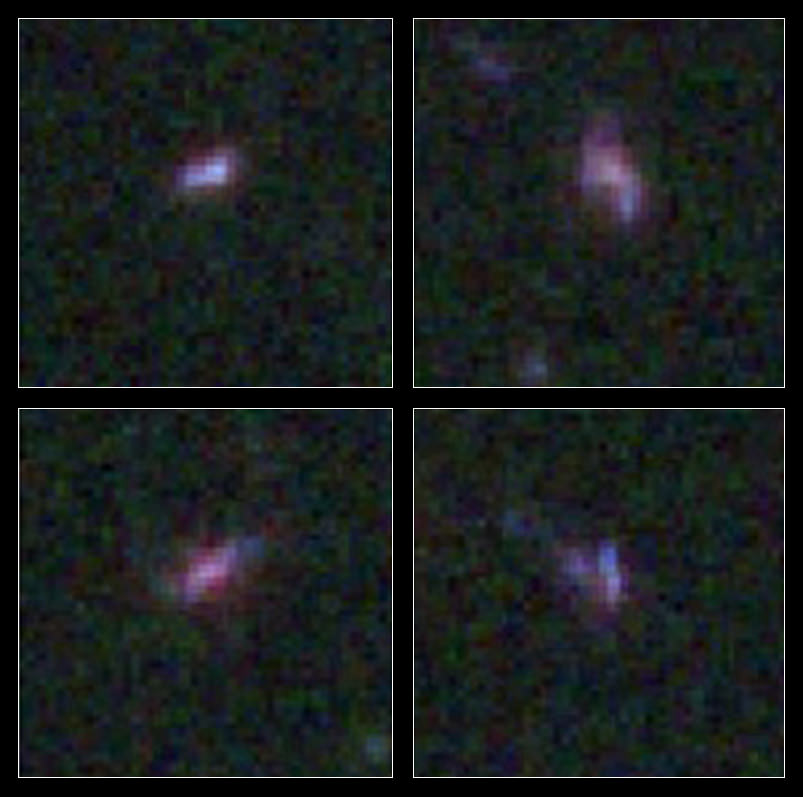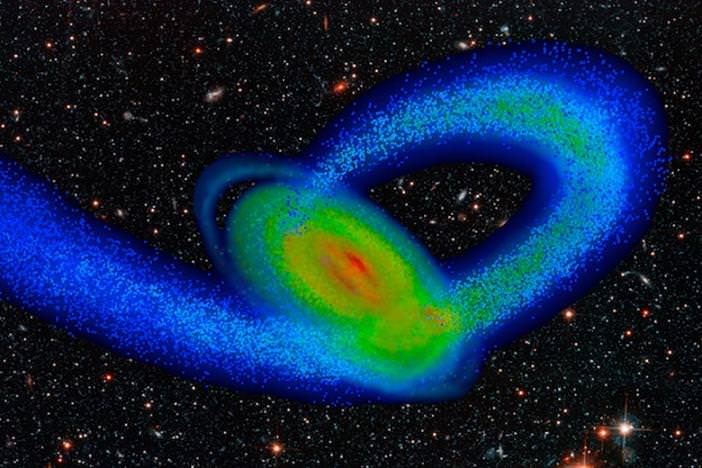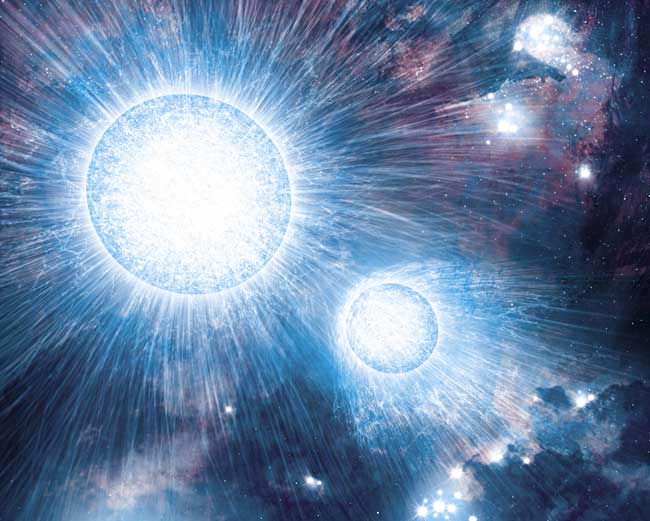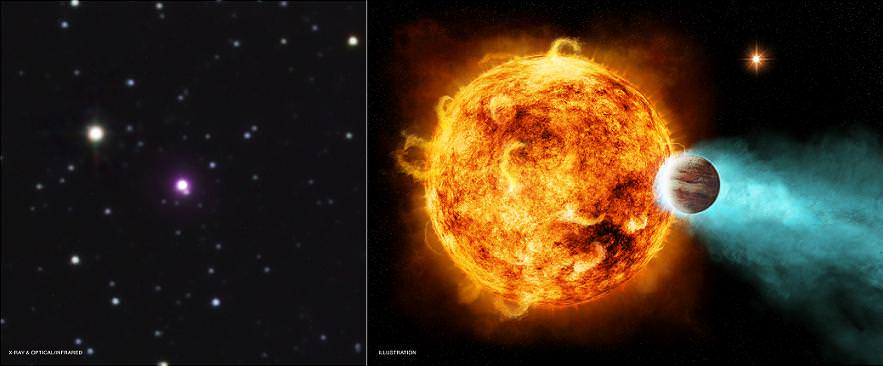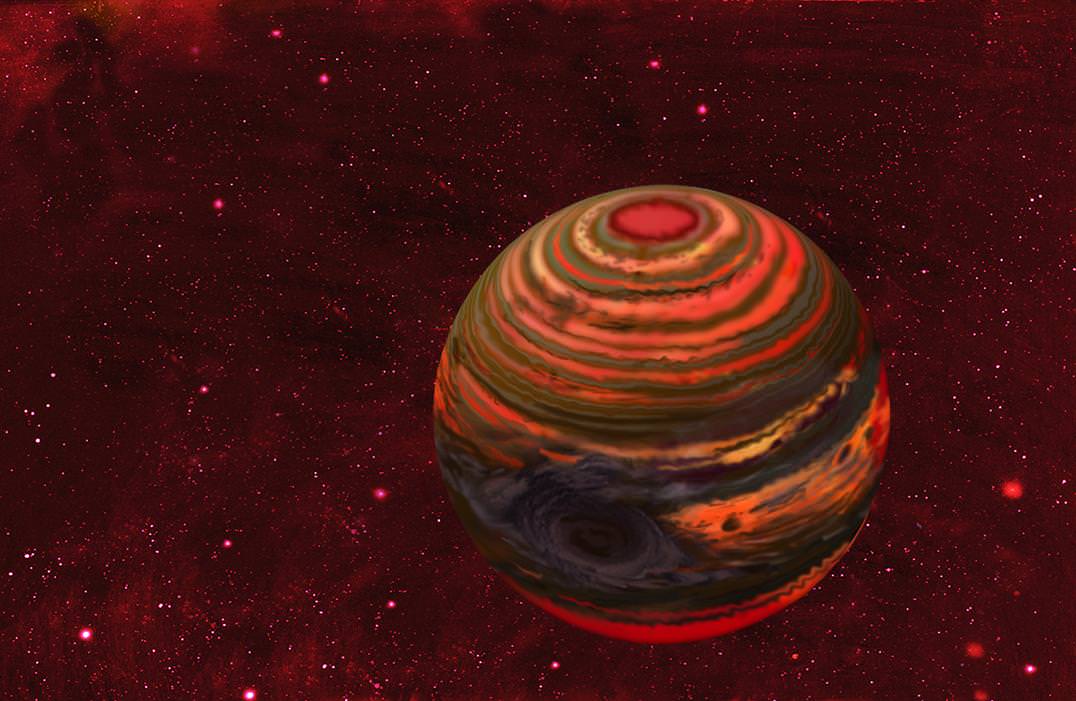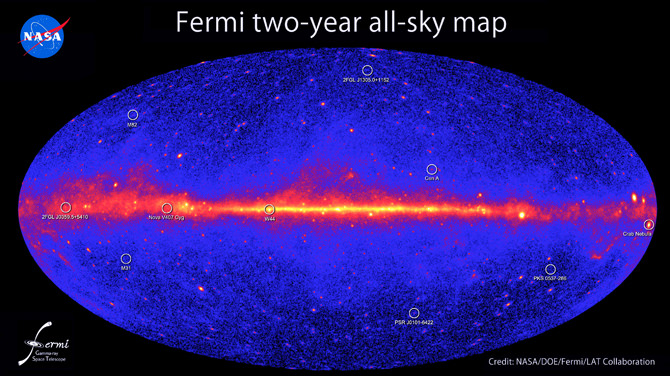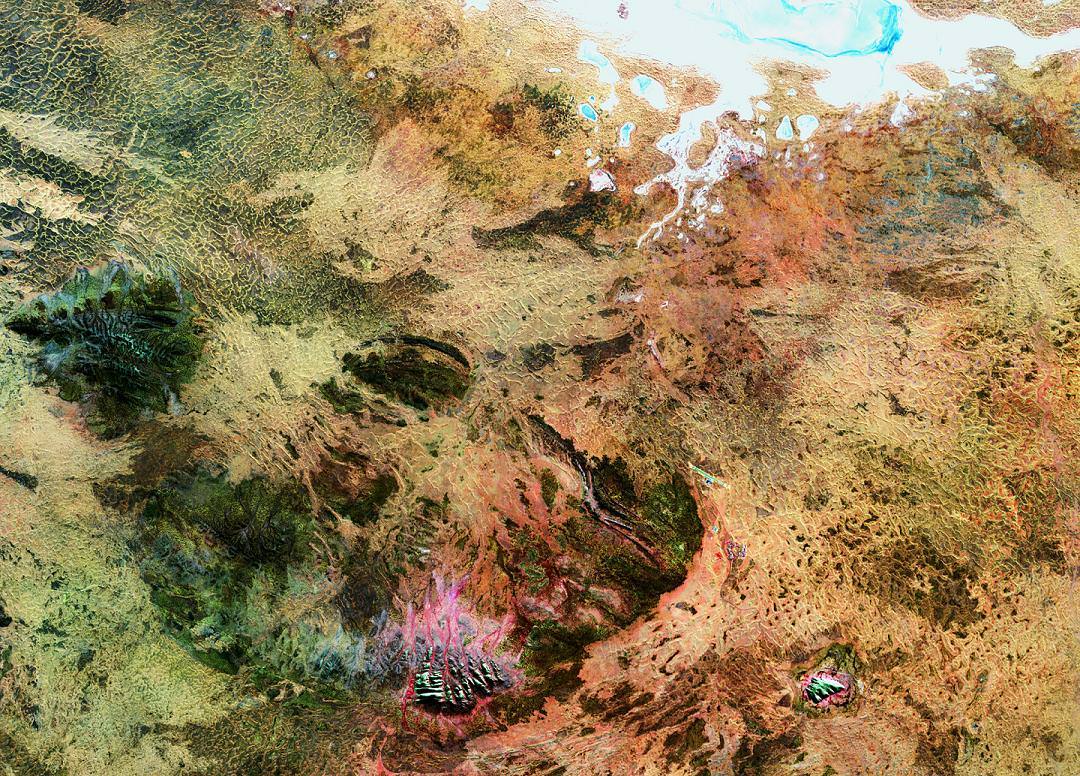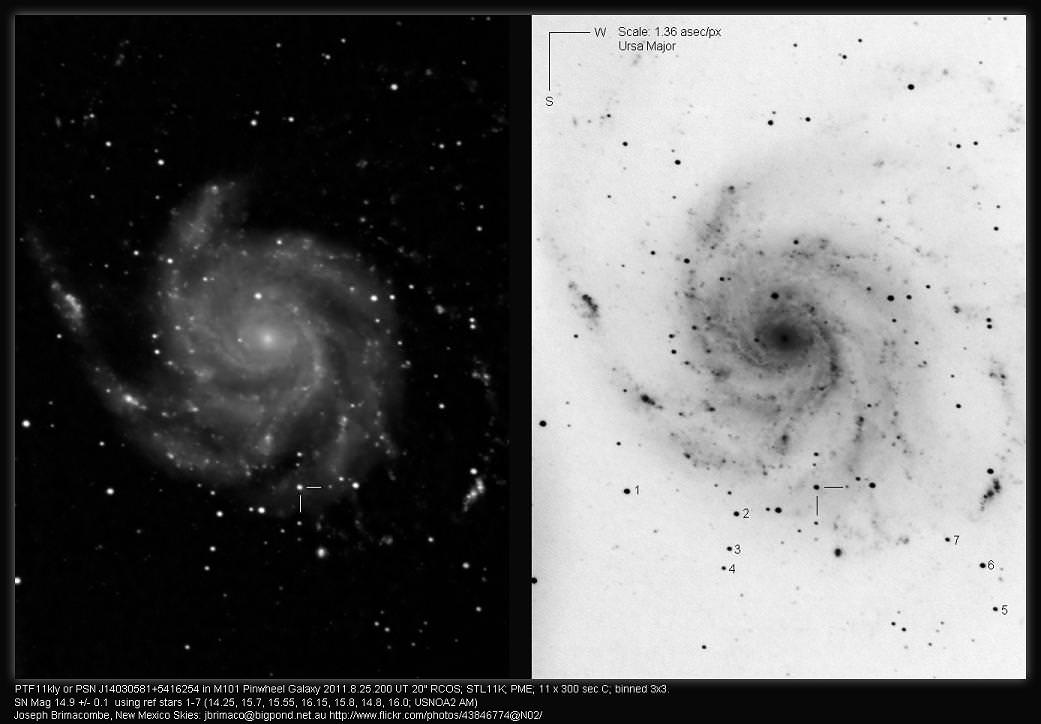[/caption]Imagine an event so catastrophic that it pours more energy out in three hours than the Sun does in a hundred years. Now imagine it a reality. In a study done by Yuri Cavecchi et al. (2011), they’ve witnessed a neutron star outburst which has put all computer modeling for thermodynamic explosions on extreme objects back to square one.
Apparently a strong magnetic field around accreting pulsar IGR J17480-2446 is the culprit for some areas of the star to ignite in the extreme. X-ray binary IGR J17480-2446, as a general rule, should be about one and a half times the mass of the Sun confined in an area of about 25km. This creates a strong gravitational field which extracts gas from its orbiting companion. In turn, this collects on the surface of the primary and kindles a fast, high-energy thermonuclear reaction. In a perfect scenario, this reaction would be spread over the surface evenly, but for some reason in about 10% of case studies some areas burn brighter than others. Just why this happens is a true enigma.
In order to better understand the phenomena, theoretical models were created to test out spin rates. They suggest that rapid rotation stops the burning material from spreading uniformly – much like the Coriolis force develops terrestrial hurricanes. Another hypothesis proposes these conflagrations ride on global-scale waves where one side stays cool and dim as it rises, while the other remains hot and bright. But just which one is viable in the case of this strange pulsar?
“We explore the origin of Type I burst oscillations in IGR J17480–2446 and conclude that they are not caused by global modes in the neutron star ocean. We also show that the Coriolis force is not able to confine an oscillation-producing hot-spot on the stellar surface.” says lead author Yuri Cavecchi (University of Amsterdam, the Netherlands). “The most likely scenario is that the burst oscillations are produced by a hot-spot confined by hydromagnetic stresses.”
What makes the astronomers think this way? One explanation might be the strange properties of J17480 itself. While it obeys the rules when it comes to forming bright patches during thermonuclear events, it break them when it comes to spin rates. Why does this particular star only rotate about 10 times per second when the next slowest does it at 245? This is where the magnetic field theory comes into play. Perhaps when explosions occur, it’s held in place by this invisible, yet powerful, force.
“More theoretical work is needed to confirm this, but in the case of J17480 it is a very plausible explanation for our observations”, says Cavecchi. Co-author Anna Watts further explains their new models – while interesting – might not account for all non-uniform events seen in similar situations. “The new mechanism may only work in stars like this one, with magnetic fields that are strong enough to stop the flame front from spreading. For other stars with this odd burning behavior, the old models might still apply.”
Original Information Source: Netherlands Research School for Astronomy. For Further Reading: Implications of burst oscillations from the slowly rotating accreting pulsar IGR 17480-2446 in the globular cluster Terzan 5.

